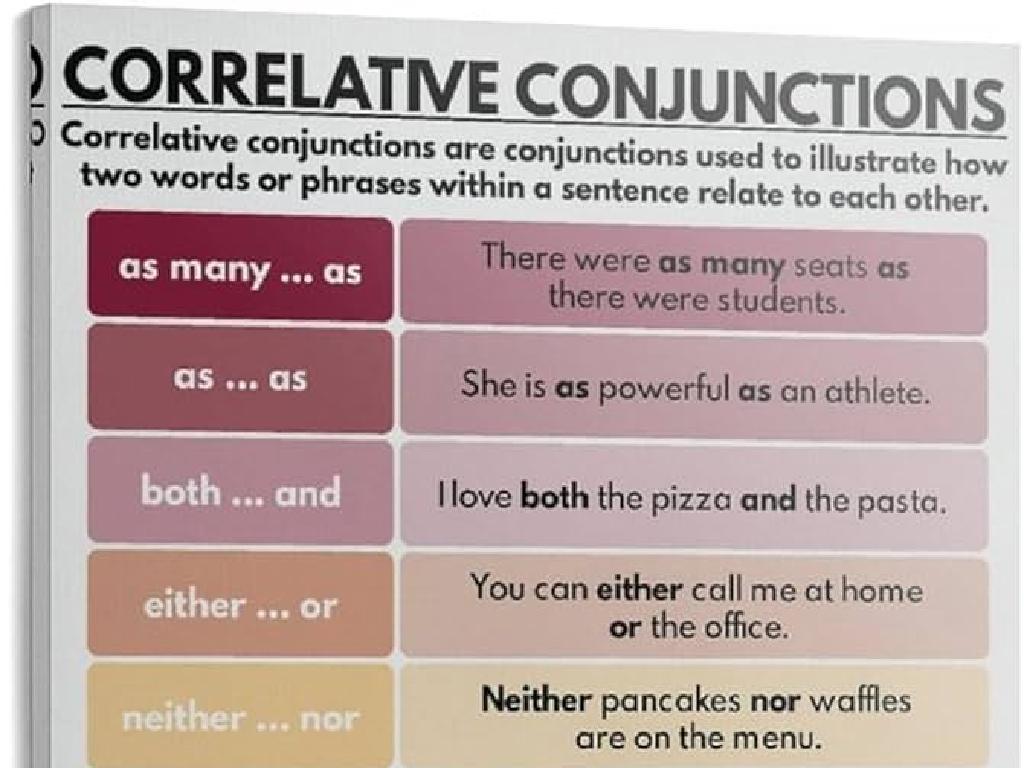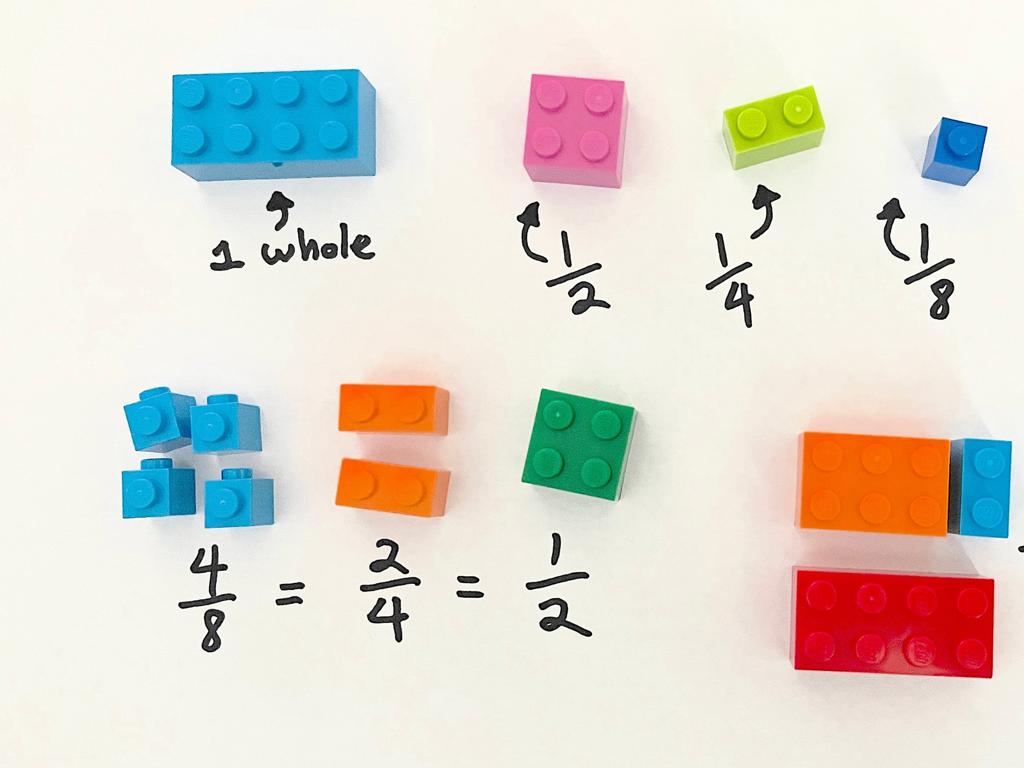Name Countries Of Northern And Central America
Subject: Social studies
Grade: Eighth grade
Topic: The Americas: Geography
Please LOG IN to download the presentation. Access is available to registered users only.
View More Content
Exploring Northern & Central America
– Geography of The Americas
– The Americas consist of diverse landscapes and climates.
– Why geography matters
– Geographical knowledge connects us to the world and its cultures.
– Countries in Northern America
– Includes Canada, USA, Mexico, and Greenland.
– Central American nations
– A region connecting North and South America, including countries like Guatemala and Panama.
|
This slide introduces students to the geography of The Americas with a focus on Northern and Central America. Emphasize the diversity of the region, from the Arctic tundra of Canada to the tropical forests of Central America. Discuss the importance of geographical knowledge in understanding global connections, environmental issues, and cultural diversity. Highlight the countries of Northern America, including Canada, the United States, Mexico, and Greenland, and discuss the distinct geographical features of each. Then, transition to the countries of Central America, such as Guatemala, Belize, Honduras, El Salvador, Nicaragua, Costa Rica, and Panama, noting their role as a land bridge between continents. Encourage students to explore these countries’ unique characteristics and their significance in the broader context of The Americas.
Exploring North America
– Largest countries: Canada, USA, Mexico
– Diverse climates and landscapes
– From Arctic tundras to tropical rainforests
– Major landmarks
– Statue of Liberty, Chichen Itza, Banff National Park
– Cultural regions
– The melting pot of cultures, indigenous heritage
|
This slide aims to give students a broad overview of North America’s geography. Start by pointing out the three largest countries on a map. Discuss how the continent’s vast size leads to a variety of climates and landscapes, such as the cold Arctic regions of northern Canada and the warm tropical areas of southern Mexico. Highlight well-known landmarks like the Statue of Liberty in the US, Chichen Itza in Mexico, and Banff National Park in Canada to give a sense of the physical and historical geography. Lastly, touch on the cultural regions, emphasizing the diversity from the indigenous populations to the various immigrant cultures that have shaped the continent’s identity. Encourage students to think about how geography influences culture and lifestyle.
Central America: A Closer Look
– Explore the seven nations
– Belize, Costa Rica, El Salvador, Guatemala, Honduras, Nicaragua, Panama
– Geographical features
– Land of volcanoes, rainforests, and beaches
– Cultural highlights
– Diverse languages, cuisines, and traditions
– Historical insights
– Rich history from ancient civilizations to modern times
|
This slide aims to introduce students to the seven countries that make up Central America. Highlight the unique geographical features such as the volcanic landscapes, lush rainforests, and stunning beaches that characterize the region. Discuss the rich cultural diversity, including the various languages spoken, the traditional cuisines, and the vibrant customs and celebrations. Provide historical context by touching on the ancient civilizations that once thrived here, such as the Maya, and the journey of these nations through colonial times to their current status. Encourage students to research more about each country’s individual history and culture as part of their study on The Americas.
Countries and Capitals of Northern & Central America
– Memorize countries and capitals
– Learn the list of countries with their capitals like ‘Canada’s capital is Ottawa’
– Use mnemonics for retention
– Create memory aids like ‘Big Elephants Can Always Understand Small Elephants’ for Belize and its capital Belmopan
– Interactive capital matching quiz
– Test your knowledge by matching countries like Mexico with Mexico City
– Engage with the geography
|
This slide aims to help students memorize the countries of Northern and Central America along with their capitals. Encourage the use of mnemonic devices to make retention easier. For example, associating the shape or a unique feature of a country with its capital can aid memory. An interactive quiz can be a fun way for students to test their knowledge and reinforce learning. Consider using a map to visually engage students with the geography of the region. This activity will not only help in memorizing the names but also in understanding the spatial relationships between countries and their capitals.
Physical Geography of Northern & Central America
– Major mountain ranges & rivers
– Sierra Madre, Rocky Mountains, and the Mississippi-Missouri river system.
– Geography’s effect on culture & economy
– Geography shapes agricultural practices, settlement patterns, and industry.
– Case study: Panama Canal
– Connects Atlantic and Pacific Oceans, revolutionizing maritime trade routes.
– Panama Canal’s global significance
– Facilitates international trade, affects economies worldwide.
|
This slide aims to explore the physical geography of Northern and Central America and its influence on the region’s culture and economy. Highlight the major mountain ranges like the Sierra Madre and the Rockies, as well as significant rivers like the Mississippi and Missouri, which have shaped human activity and settlement. Discuss how the natural environment affects agriculture, cultural practices, and economic development. Use the Panama Canal as a case study to illustrate the profound impact of geography on trade and travel, emphasizing its role in connecting two major oceans and altering global trade patterns. Encourage students to think about how such a geographical feature can have far-reaching effects on international relations and economies.
Cultural Diversity in Northern & Central America
– Diversity in culture
– A mosaic of various ethnicities and traditions
– Languages and traditions
– Spanish, English, French, and indigenous languages
– Celebrations and holidays
– Independence days, Day of the Dead, Thanksgiving
– Geography’s impact on culture
– Landscape influences food, clothing, and lifestyle
|
This slide aims to highlight the rich cultural diversity found in Northern and Central America, influenced by indigenous peoples, European colonization, and immigration. Students should understand that language is a key component of culture, with Spanish being predominant in Central America and English in Northern America, alongside French in regions like Quebec and various indigenous languages. Traditions and holidays such as Independence Day celebrations in various countries, Mexico’s Day of the Dead, and the United States’ Thanksgiving reveal the unique cultural practices. Geography plays a crucial role in shaping these cultures, with the diverse landscapes affecting the food, clothing, and overall lifestyle of the inhabitants. Encourage students to research and share examples of how geography has influenced cultural identity in these regions.
Map Creation: Exploring Northern & Central America
– Craft your annotated map
– Mark countries and capitals
– Highlight major physical features
– Include mountains, rivers, and lakes
– Share a country’s interesting fact
– Research and find a unique or lesser-known fact
|
This class activity is designed to engage students with the geography of Northern and Central America in a hands-on way. Students will create their own maps, labeling each country and its capital, and highlighting significant physical features such as mountain ranges, rivers, and lakes. Encourage creativity and accuracy in their map-making. After completing their maps, each student will present their work to the class and share an interesting fact about one of the countries they have researched. This could be about the culture, history, or a geographical aspect. Teachers should prepare a list of resources where students can find reliable information, and ensure that each student chooses a different country to avoid repetition. This activity will help students to better remember the countries and capitals, understand the physical geography of the region, and learn about the diversity within these countries.
Conclusion: Countries of Northern & Central America
– Recap Northern & Central American countries
– Geography’s role in world understanding
– Geography influences culture, politics, and economics
– Open floor for questions
– Engage in class discussion
– Share thoughts on the countries studied
|
This slide aims to wrap up the session by revisiting the countries of Northern and Central America that were discussed. Emphasize the importance of geography in shaping our perception of the world, including cultural and political aspects. Encourage students to ask any lingering questions they might have and to participate in a class discussion to reflect on what they’ve learned. This is an opportunity for students to connect the facts about each country to a broader understanding of global geography and its impact on daily life and international relations. Facilitate the discussion by prompting students with questions about how geography can affect a country’s development, culture, and interactions with other countries.






